Nanjing Confucius Temple
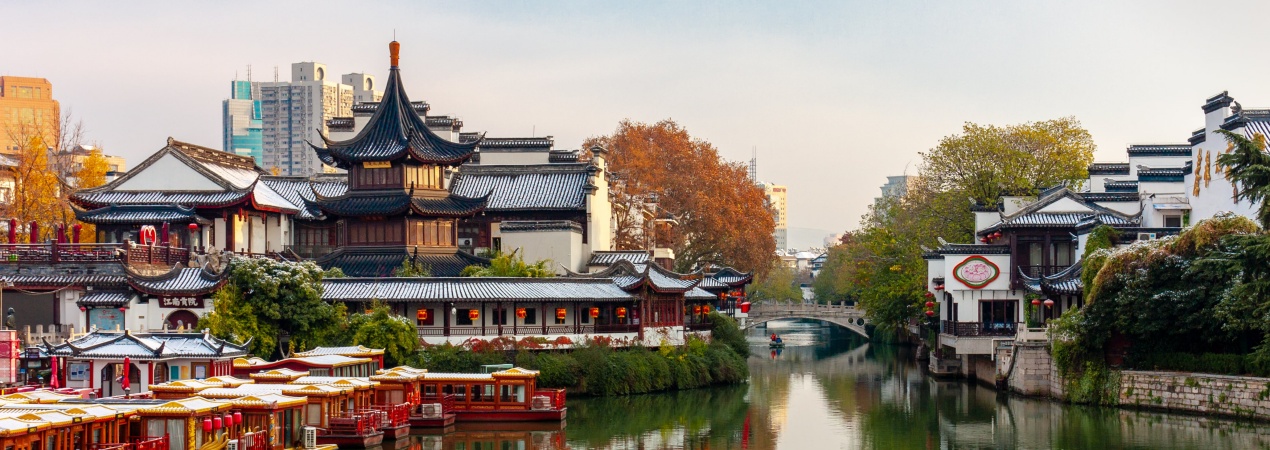
On the north bank of the Qinhuai River in Qinhuai District, Nanjing, lies Nanjing Confucius Temple (Fuzimiao) on Gongyuan Street. It is the cultural heart of the Nanjing Confucius Temple - Qinhuai River Scenic Area. As China's first imperial academy and one of the Four Great Confucian Temples, this historic complex was the top educational institution in ancient China. It was a cultural hub in the Ming and Qing dynasties and Nanjing's leading center of scholarship. It enshrines Confucius and represents the most magnificent group of traditional academic architecture in southeastern China. For centuries, the intellectual essence of Jinling (Nanjing's old name) has been concentrated here.
- Chinese name:南京夫子庙 Nán Jīng Fū Zǐ Miào
- Recommended Duration: 3-4 hours
-
Entrance Fee: Free of charge, with some attractions charging fees:
Dacheng Hall RMB 30
Nanjing China Imperial Examination Museum RMB 20
Wang Dao and Xie An Memorial Hall RMB 8
Li Xiangjun Former Residence RMB 16
Qin Dashi Former Residence RMB 8
-
Opening Hours:
Dacheng Hall:8:00-21:30
Jiangnan Imperial Examination Museum:8:30-22:00
Wang Dao & Xie An Memorial Hall:9:00-22:00
Li Xiangjun Former Residence:9:00-21:00
Qin Dashi Former Residence:9:00-11:30,14:00-17:00
Bailu Zhou Park:6:00-22:00
- Best time to visit: September to December
- Address: No.152, Gongyuan Street, Qinhuai District, Nanjing
-
How to get there:
By Metro: Take Metro Line 3 to Fuzimiao Station, exit from Exit 2, and walk for about 5 minutes to arrive
By Bus:Buses such as Route 1, Route 4 and Route 7 can be taken to Fuzimiao Station
Highlights of Nanjing Confucius Temple
Dacheng Hall
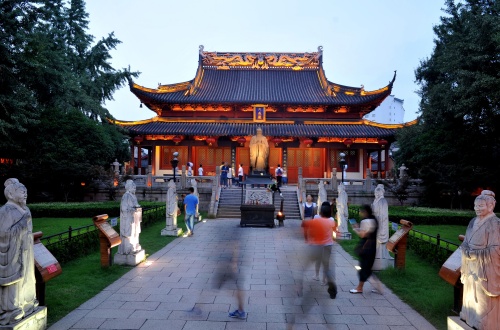 Dacheng Hall
Dacheng HallDacheng Hall of Fuzimiao is the main building of Fuzimiao and also the sacred hall for worshipping Confucius. The entire building features a double-eaved gable and hip roof covered with blue tiles, with a standing sculpture of two dragons playing with a pearl on the ridge and interlaced brackets, presenting a majestic momentum. In the center of the hall is displayed the largest giant portrait of Confucius in China, painted by renowned modern painter Wang Hongxi with reference to the portrait of Confucius by Wu Daozi. On both sides are enshrined the Four Sages including Yan Hui and Zengzi. The 38 colored stone murals, "The Sacred Traces of Confucius" inlaid on the surrounding walls are the treasure of Fuzimiao. Made of precious jade materials such as chicken-blood frozen stone and crafted with relief inlay, these murals contain 408 figures, vividly depicting Confucius' exemplary image as "the teacher for all ages". In addition, in front of the hall stands the tallest bronze statue of Confucius among Confucian temples in China, which is worth savoring carefully.
Scenery of the Qinhuai River
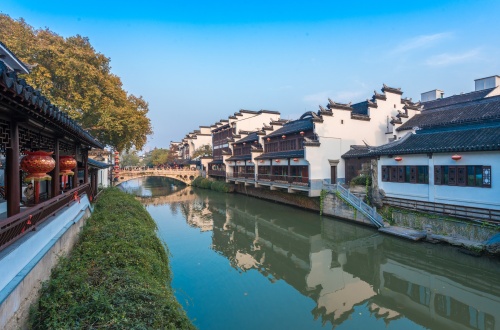 Scenery of the Qinhuai River
Scenery of the Qinhuai RiverThe Qinhuai River is the "mother river" of Nanjing, and the Fuzimiao-Qinhuai River Scenic Belt is a national AAAAA-level tourist attraction. Centered on the ancient architectural complex of Fuzimiao, the scenic area takes the ten-li inner Qinhuai River as its axis. Along the river are many scenic spots and historical sites such as the Zhonghua Gate Wengcheng (ancient barbican), Zhan Garden and Bailuzhou Park. Boating on the Qinhuai River, visitors can enjoy the ancient buildings along the river and feel the prosperous scene of "ten li of pearl curtains". At night, painted boats shuttle on the river, both banks are brightly lit, and colored lights reflect in the water, glowing with flowing colors. "Mooring on the Qinhuai River at night" is praised as a classic water tour in Nanjing, allowing people to fully appreciate the charming beauty of the Qinhuai River at night.
Wuyi Alley
This is a famous historical area. It is located on the south side of Wende Bridge near Confucius Temple. During the Eastern Jin Dynasty, the powerful Wang and Xie families lived here, making it well-known. The Tang Dynasty poet Liu Yuxi wrote a famous line about it: "Swallows that once flew near noble homes now enter common houses." Today, Wuyi Alley still keeps its old look. The buildings have black roofs and blue-gray brick walls. The narrow lane is quiet with interesting light patterns. Places like the Zither Hall, Swallow Hall, and Wang Dao-Xie An Memorial remain. They show the style of the Wei-Jin period. Walking here feels like going back in time. You can imagine the past glory of the Wang and Xie families.
Nanjing China Imperial Examination Museum
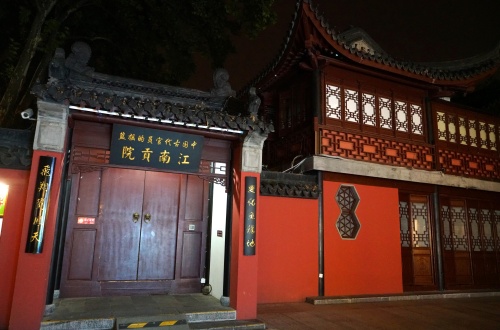 The Jiangnan Examination Hall in the Nanjing China Imperial Examination Museum
The Jiangnan Examination Hall in the Nanjing China Imperial Examination MuseumThe Nanjing China Imperial Examination Museum, rebuilt from the Jiangnan Examination Hall, is a special museum showing China's ancient imperial examination system and culture systematically. Its main part lies underground, shaped like a treasure box, with a 1,300-square-meter mirror-like pool on top and an open courtyard at the bottom surrounded by a square pool. Outer walls decorated like "bamboo scrolls" give a strong sense of history.
Visitors walk down a 130-meter circular ramp, with bamboo slip stacks on one side and 3D tile-and-stone courtyards on the other, symbolizing the imperial exams' 1,300-year history. The permanent "Stairway to Civilization – Special Exhibition on Imperial Examination Culture" has 5 areas and 33 rooms. Using artifacts, art and multimedia, it shows the exam system's start, peak, decline and end, plus scholars' rise from commoners to powerful officials. Also on display are big and small golden lists, various exam plaques and carvings, showing the full exam process and related culture.
Educational Value
The main function of the Confucius Temple is to worship Confucius. Confucius started Confucianism. His ideas of "benevolence, righteousness, propriety, wisdom and faith" are the core of traditional Chinese culture. In the Dacheng Hall, there is a statue of Confucius, the "Four Correlates" enshrined with him, and the murals of The Sacred Traces of Confucius. These visual things make Confucius' life stories and educational thoughts (like "education for all" and "teaching students according to their abilities") clear and concrete. When visitors look around, they can directly feel the core of Confucian culture. They can also understand its deep influence on China's social ethics and education system.
Activities to do at Nanjing Confucius Temple
Qinhuai Lantern Festival:It is a very special event at the Confucius Temple. It is usually held during the Spring Festival. During the festival, many beautiful lantern sets are placed in the main exhibition area of the Confucius Temple, the Bailuzhou Park exhibition area, the Ten-Li Qinhuai Water Exhibition Area and other places. They use modern technologies like sound, light and electricity. There are also NPC interactive performances. All these show a bright and splendid light scene. They create a strong festive atmosphere.
Drop us a line and we'll connect you with the top China expert in no time!
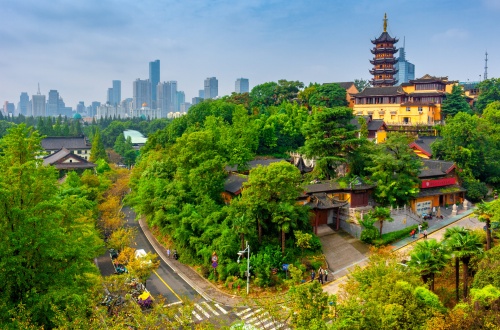 Jiming Temple
Jiming Temple 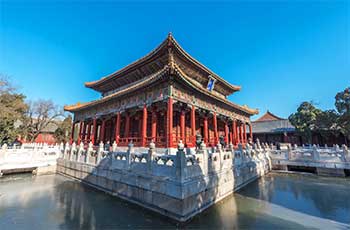 Temple of Confucius and the Imperial College
Temple of Confucius and the Imperial College 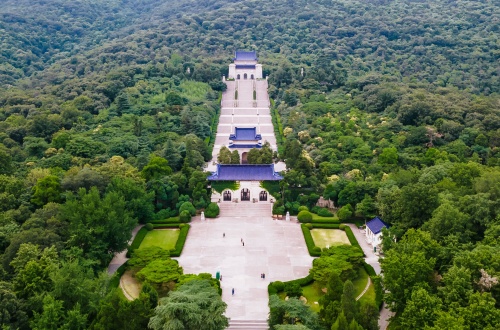 Nanjing Sun Yat-sen Mausoleum
Nanjing Sun Yat-sen Mausoleum 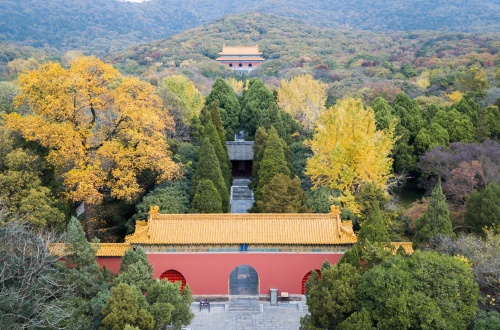 Ming Xiaoling Mausoleum
Ming Xiaoling Mausoleum